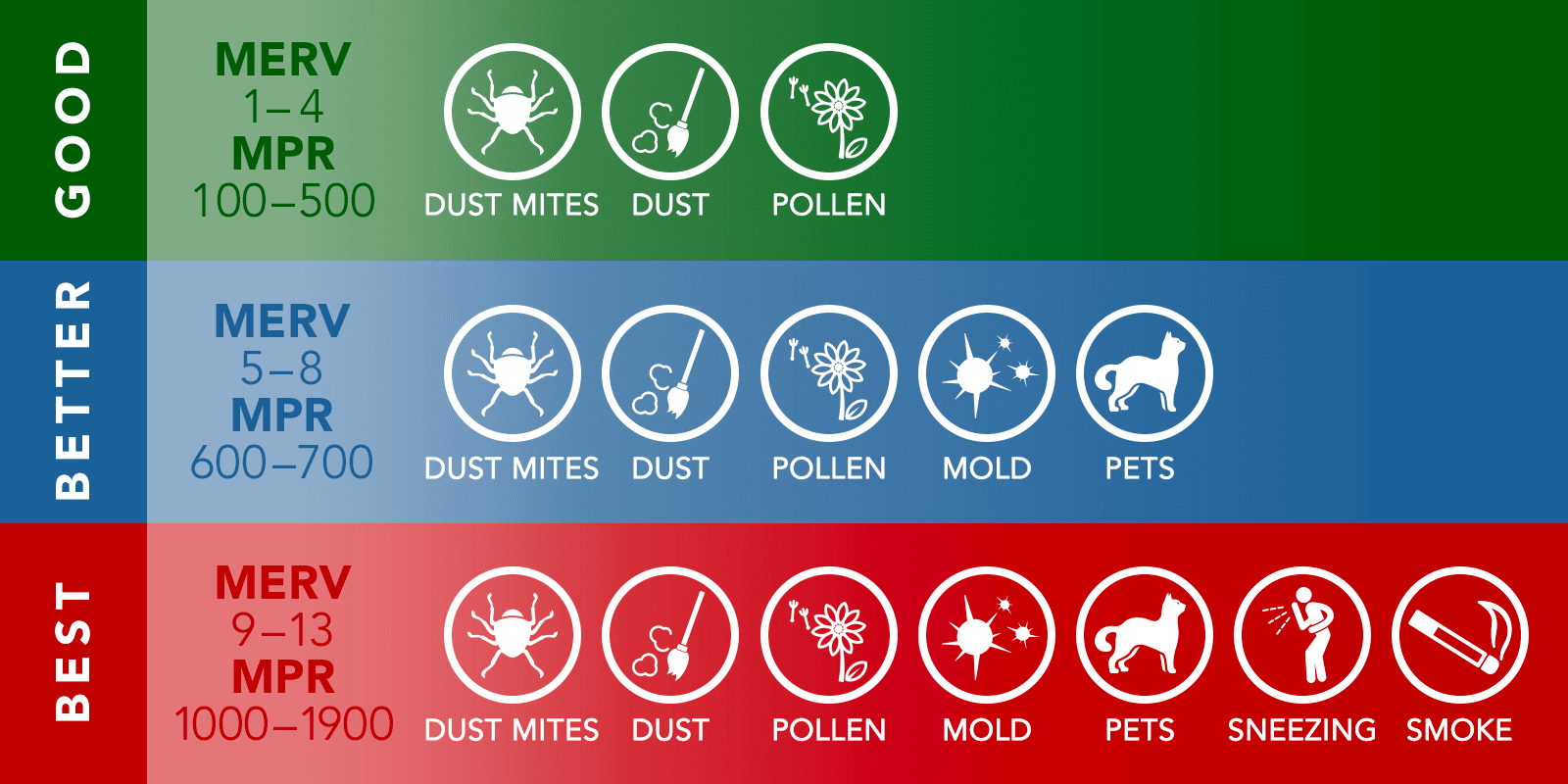What are MERV ratings? If you’re like most people, you don’t think about your air filter until it’s time to change it. You’ve probably come across MERV ratings if you’re in the market for a new air filter. But what do they mean? And how do you choose the right one for your needs?
In this blog post, we’ll answer those questions and more! We’ll discuss MERV ratings, their meaning, and how to choose the right one for your needs. So whether you’re looking to buy a new air filter or want to learn more about MERV ratings, this blog post is for you!
What Does A MERV Rating Mean?
MERV means Minimum Efficiency Reporting Value. It’s a rating system that rates how well an air filter can remove particles from the air. The MERV rating is based on the particle size that the filter can remove, with a higher MERV rating meaning that smaller particles can be removed.
Bacteria, pet dander, dust, mould spores, carpet and textile fibres, dust mites, pollen, and tobacco smoke are a few of the particles that are often analyzed in furnace filters. A MERV 7-12 filter will be enough for most household systems to remove airborne pollutants. MERV 13-20 is often observed in hospital and general surgical settings.
How Does The MERV Rating System Work?
The efficiency of a filter in filtering particles of various sizes determines its MERV rating. We’re talking about 12 different-sized particles from 0.3 to 10 micrometres (m) in diameter generated in a lab setting. MERV 13-20 filters are MERV 16 and above.
To get a MERV 16, the filter must remove at least 99.97% of particles that are 0.12 m in diameter or larger. MERV 17 requires removing at least 99.9985%, MERV 18 at least 99.999%, MERV 19 at least 99.9995%, MERV 20 at least 99.9999%.
The highest MERV equivalent is FPGA (Fine Particle Guard Action) which captures particles as small as 0.005 m with an efficiency of MERV 20.
Guide To The MERV Rating List
Examine the following basic principles to learn more about which MERV grade is ideal for your filtration needs:
MERV 1-4
- Filters particles down to the size of ten microns.
- Carpet fibres, textile, sawdust, dust mites, and pollen are all controlled with this filter.
- Pre-filtering business buildings, household furnaces, and window air conditioners.
MERV 5-8
- MERV filters particles down to the size of three to ten microns.
- MERV ratings in this range will also remove most bacteria from the air and smaller viruses.
- MERV filters are often used in hospitals, schools, and other public buildings where airborne viruses are a concern.
MERV 9-12
- MERV filters particles down to the size of one to three microns.
- Filters general home dust, mould spores, humidifier and nebulizer dust, coal dust, lead dust, legionella, concrete dust, carpet fibres, textile, sawdust, dust mites, and pollen.
- MERV filters are often used in residential and commercial buildings with higher-than-average air quality requirements and hospital labs.
MERV 13-16
- MERV filters particles down to the size of 0.3 to one micron.
- In addition to pet dander, bacteria, car fumes, cosmetic dust, photocopier ink fumes, cigarette smoke, pesticide dust, and sneeze particles, it controls all of the pollutants specified for MERV 1-12 above.
- Typical applications include general surgical facilities, inpatient care hospitals, and other business and residential structures that need excellent air filtration.
MERV 17-20
- MERV filters particles down to the size of 0.3 microns.
- All of the particles described above for MERV 1-16, as well as combustion smoke, minuscule allergens, sea salt, radon progeny, carbon dust, and virus carriers, are controlled.
- Orthopedic surgery rooms, pharmaceutical production, and carcinogenic and radioactive materials are examples of establishments that use these MERV ratings.
What Is The Best MERV Rating for Your Home?
MERV ratings for home air filters typically range from MERV six to MERV 16. The best MERV rating for your home depends on the type of furnace you have and your family’s specific needs.
Suppose you or someone in your family suffers from allergies, asthma, or other respiratory conditions. In that case, a higher MERV rating will be necessary to remove the smaller particles from the air that can trigger an attack.
MERV 16 filters are the most effective at capturing these particles. Still, they can also strain your furnace, so it’s important to consult with a professional before making a decision.
On the other hand, if you have pets or smoke cigarettes, you’ll want a MERV rating that’s high enough to remove pet dander, smoke particles, and other larger airborne contaminants. MERV 13 filters are typically the best for homes with pets or smokers.
Conclusion – What Are MERV Ratings?
MERV ratings are a useful way to compare the effectiveness of different air filters. The higher the MERV rating, the more efficient the filter will remove particles from the air.
When choosing a MERV rating for your home, it’s important to consider your family’s specific needs and consult with a professional to make sure you’re choosing a filter that won’t strain your furnace. You can read more about MERV Ratings here: https://filterking.com/hvac-filters/merv-ratings.
MERV filters are a great way to keep the air in your home clean and free of allergens, bacteria, and other airborne contaminants. With so many different MERV ratings, it can be difficult to know which one is right for your home. Consult Furnace Repair Winnipeg to help you choose the perfect MERV rating for your home.










